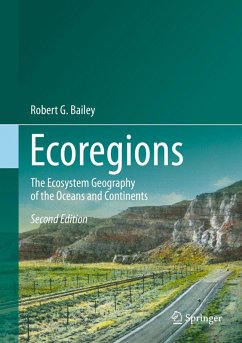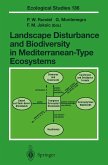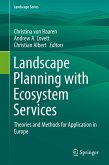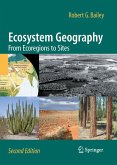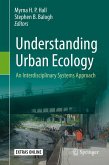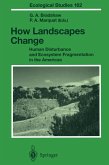The first edition of this book (1998) classified and characterized the regional-scale ecosystem units (ecoregions) of the Earth as shown on a map that Bailey developed with the encouragement of several international organizations. In addition to the descriptive account, his primary goal was to suggest explanations of the mechanisms that act to produce the world pattern of ecoregion distribution, and to consider some of the implications for land use. He included ocean types, since understanding land regions depends on understanding ocean systems.
The increasing importance of ecoregions is confirmed by the fact that much planning, research, and management efforts by the US Forest Service, The Nature Conservancy, World Wildlife Fund and other organizations are taking place now within the framework of ecoregions. Over years since the book was first published a number of studies have greatly contributed to a better understanding of the Earth's ecoregions. This second edition is acompletely updated and expanded version. New sections address how ecoregions are changing under the relentless influence of humans (such as modification of fire regimes and the introduction of invasive species) and climate change, the use of ecoregional patterns to transfer research results and select sites for detecting climate change effects on ecosystem distribution, and the use of ecoregional patterns to design monitoring networks and sustainable landscapes.
From the reviews of the 1st edition:
"Ecoregions offers an invaluable source of description, interpretation and analysis of global patterns of ecosystem distribution and successfully provides the reader with a means of making sense of these patterns." -Geography
"... this volume provides two major advances over previous works ... Bailey realizes that understanding continental systems requires a grasp of the enormous influence that ocean systems and mountain building exert on terrestrial climatic patterns..." -The Quarterly Review of Biology
About the Author:
Robert G. Bailey is a geographer with the United States Forest Service, Rocky Mountain Research Station, Inventory and Monitoring Program, in Fort Collins, Colorado, and the former leader of the agency's Ecosystem Management Analysis Center. His work involves the application of ecosystem geography to ecological planning and design.
The increasing importance of ecoregions is confirmed by the fact that much planning, research, and management efforts by the US Forest Service, The Nature Conservancy, World Wildlife Fund and other organizations are taking place now within the framework of ecoregions. Over years since the book was first published a number of studies have greatly contributed to a better understanding of the Earth's ecoregions. This second edition is acompletely updated and expanded version. New sections address how ecoregions are changing under the relentless influence of humans (such as modification of fire regimes and the introduction of invasive species) and climate change, the use of ecoregional patterns to transfer research results and select sites for detecting climate change effects on ecosystem distribution, and the use of ecoregional patterns to design monitoring networks and sustainable landscapes.
From the reviews of the 1st edition:
"Ecoregions offers an invaluable source of description, interpretation and analysis of global patterns of ecosystem distribution and successfully provides the reader with a means of making sense of these patterns." -Geography
"... this volume provides two major advances over previous works ... Bailey realizes that understanding continental systems requires a grasp of the enormous influence that ocean systems and mountain building exert on terrestrial climatic patterns..." -The Quarterly Review of Biology
About the Author:
Robert G. Bailey is a geographer with the United States Forest Service, Rocky Mountain Research Station, Inventory and Monitoring Program, in Fort Collins, Colorado, and the former leader of the agency's Ecosystem Management Analysis Center. His work involves the application of ecosystem geography to ecological planning and design.
Dieser Download kann aus rechtlichen Gründen nur mit Rechnungsadresse in A, B, BG, CY, CZ, D, DK, EW, E, FIN, F, GR, HR, H, IRL, I, LT, L, LR, M, NL, PL, P, R, S, SLO, SK ausgeliefert werden.
From the book reviews:
"This work remains a necessary resource for basic research in environmental science, management, and program development. It can serve as a textbook or reference for students in relevant programs such as geography, ecology, and resource management. Summing Up: Highly recommended. Upper-division undergraduates and above." (J. Chen, Choice, Vol. 52 (4), December, 2014)
"This work remains a necessary resource for basic research in environmental science, management, and program development. It can serve as a textbook or reference for students in relevant programs such as geography, ecology, and resource management. Summing Up: Highly recommended. Upper-division undergraduates and above." (J. Chen, Choice, Vol. 52 (4), December, 2014)

